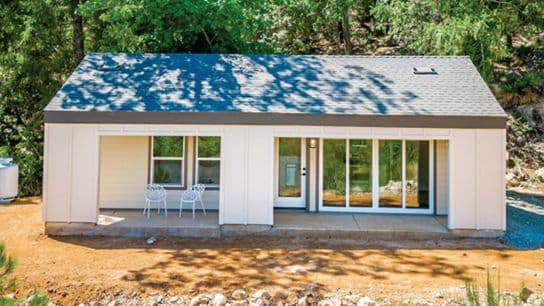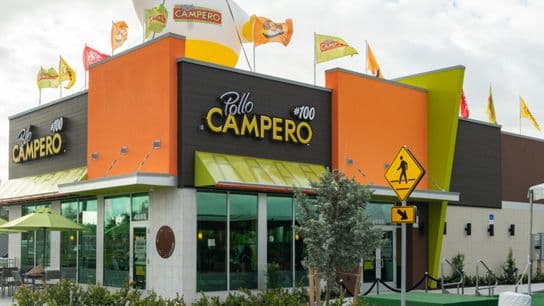What Maryland’s Economic Outlook Means for Franchisors
If you’re a franchisor looking to develop your business in Maryland, you’ll want to consider the state’s policy variables and growth rates when scaling your plans.
This summer, ALEC-Laffer published its annual Economic Competitiveness Rankings, which forecasts a state’s current standing within 15 state policy variables. The report features two different rankings: Economic Outlook — a forecast based on a state’s current standing in 15 state policy variables — and Economic Performance — a retrospective measure based on a state’s performance over a 10-year period from 2008 until 2018. For the state of Maryland, these rankings reveal a lot about where the state economy is going and where there is opportunity for its economy to grow.
- 2020 Outlook Ranking: 37
- 2008–2018 Performance Ranking: 30
The State
Prior to the pandemic, small businesses were the backbone of Maryland’s economy. With over 580,000 small businesses in the state, they comprised nearly 99.5 percent of its businesses. Those small businesses also employed around 1.1 million people. In more recent years, information technology, telecommunications, aerospace and defense were leading forces behind Maryland's economic growth.
Although Maryland added 24,200 jobs in August, the state is still down more than 205,000 jobs since the pandemic began. Maryland closed its fiscal year at the end of June seeing a $925 million drop in tax revenue. State Budget Secretary David Brinkley says the state can expect to be down about $2 billion for the current fiscal year as a result of the ongoing economic effects of the COVID-19 pandemic.
Making Sense of the Data
What does this mean for Maryland’s economy? To start with the Economic Performance report, the index shows that within the past 10 years, Maryland has been outperformed by 30 other state economies. The performance index is based broadly on a state’s performance within State Gross Domestic Product (rank: 17th), Absolute Domestic Migration (rank: 42nd) and Non-Farm Payroll Employment (rank: 27th).
The Economic Outlook tells another story about the Maryland economy. The ranking is based on a state’s current standing in 15 state policy variables. Each of these factors, ranging from sales tax burden to state minimum wage, are influenced directly by state lawmakers through the legislative process. In this ranking, Maryland is No. 37. The state has been ranked somewhat moderate in terms of performance and the report suggests that the state’s economic future doesn’t look too different.
The report indicates that, generally speaking, states that spend and tax less experience higher growth rates than states that spend and tax more. While this is an important finding for entrepreneurs looking to start their own business, it shouldn’t discourage them from investing in the franchise of their dreams if they're in a market with a slower growth rate. For states like Maryland, this presents an opportunity for growth. For example, the state is ranked No. 4 in the nation for recently legislated tax changes — during 2017 and 2018, there was a $1.07 decrease per $1,000 of personal income. Additionally, the state was ranked No. 8 in terms of sales tax burden, with $12.83 paid per $1,000 of personal income.
When it comes to deciding where franchisors should develop their brand, it’s always important to look at the complete picture of what the region has to offer. Maryland may not be at the top of the list, but the state certainly has plenty of financial benefits.
Franchise Growth Plans
So what should franchisors do with this information? Though most franchisors take a shotgun approach — meaning wherever a prospect franchisee inquires, the franchisor will typically entertain that marketplace — the strategy of looking at these overall policies can help them scale their business at a more efficient rate. With that said, the findings within the report should not be the deciding measure for franchisors, but they should play a role in the decision.
TWO MEN AND A TRUCK*
- Current units in state: 8
- Growth capacity in state: 7
- Total jobs created at max growth capacity: 161
Cheryl Ackley, Franchise Development Specialist for moving franchise TWO MEN AND A TRUCK, notes that the brand is looking to grow in Maryland.
“At TWO MEN AND A TRUCK, we look at many different pieces when defining territories, specifically using data on individual household incomes, population and ZIP codes,” said Ackley. “These reflect how the full-service moving experience will impact our communities in a positive way by moving our customers forward.”
Footprints Floors*
- Current units in state: 0
- Growth capacity in state: 15
- Total jobs created at max growth capacity: 15 plus subcontractor work
Linton Dowling, marketing director at Raintree*, said that flooring franchise Footprints Floors has identified the state as primed for growth.
“When targeting markets, we rely heavily on our mapping software,” said Dowling. “We use this to understand where our marketing dollars will reach the widest audience. This is important, particularly as a developing/growing brand with limited marketing spend. These data points will provide scope as to what the ‘booming’ market generating the most interest is. Collating that with our sales team feedback gives us their real-time account of why particular states are booming or soon to be due to lead feedback.”
Hounds Town USA
- Current units in state: 0
- Growth capacity in state: 10
- Total jobs created at max growth capacity: 60
Dowling noted that Hounds Town USA, the doggy dare franchise, is another brand that is looking to grow in Maryland.
When picking new markets, we first look at the vicinity to established markets,” said Dowling. “This means we’re able to increase brand awareness or recognition with a limited budget. Also for an emerging brand like Hounds Town USA, franchise disclosure document registrations is a serious factor. The costs, time for registration and other legal considerations are taken into account. When we’re looking to grow our footprint in a new market, the natural first step is to look at dog to human ratio. We then move into the economic prospects of that state and demographics. If we’re trying to project growth potential, we look at a number of economic data points. Employment rate, apartment/housing booms, employment growth and interstate population growth. Young people move a lot, and of course they bring their dogs with them. Dogs need the support of a pack mentality just like our need to build a friendship circle.”
Franchise Brands Headquartered in Maryland
- Advance Realty
- Amato's
- Andy's Parties
- Aruba Tanning
- Bach to Rock
- Barmetrix Canada
- Boardwalk Fresh Burgers
- California Tortilla*
- Cartridge Depot
- Choice Hotels
- Cleannet USA
- ClimbZone
- Cluck-U Chicken
- Decorating Den Interiors
- Fractured Prune Doughnuts
- HomeGamers
- Image 360
- Interface Financial Group
- Jerry's Subs and Pizza
- JumpBunch, Inc.
- Just Moulding
- Kiddie Academy Domestic Franchising, LLC
- Ledo Pizza System, Inc.
- Lice Happens
- MaggieMoo's International, LLC
- Maid to Perfection Corporation
- Mason's Famous Lobster
- Michelle Lea Massage & Wellness
- NaturaLawn of America
- Pizza Boli's
- Quality Inn
- Rent-A-Wreck
- Roy Rogers Franchise Company, LLC
- SailTime
- Sandler Training
- Senior Helpers
- Sleep Inn and Sleep Inn & Suites
- Squisito NY Pizza
- Sylvan Learning* Center
- The Cleaning Authority
- The Greene Turtle Sports
- Towne Park Systems
- TruePresence
- Wild Bird Centers of America, Inc.
- Zips Dry Cleaning
*This brand is a paid partner of 1851 Franchise. For more information on paid partnerships please click here.









